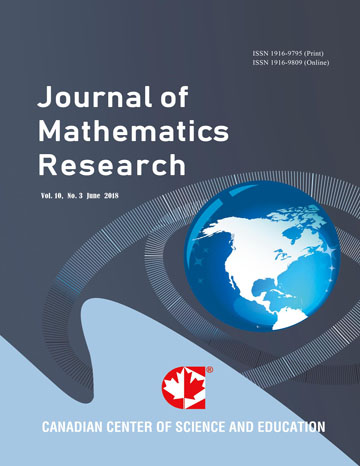A Simple Derivation of Newton-Cotes Formulas with Realistic Errors
- Mario Graca
Abstract
In order to approximate the integral $I(f)=\int_a^b f(x) dx$, where $f$ is a sufficiently smooth function, models for quadrature rules are developed using a given {\it panel} of $n\,\,(n\geq 2)$ equally spaced points. These models arise from the undetermined coefficients method, using a Newton's basis for polynomials. Although part of the final product is algebraically equivalent to the well known closed Newton-Cotes rules, the algorithms obtained are not the classical ones.In the basic model the most simple quadrature rule $Q_n$ is adopted (the so-called left rectangle rule) and a correction $\tilde E_n$ is constructed, so that the final rule $S_n=Q_n+\tilde E_n$ is interpolatory. The correction $\tilde E_n$, depending on the divided differences of the data, might be considered a {\em realistic correction} for $Q_n$, in the sense that $\tilde E_n$ should be close to the magnitude of the true error of $Q_n$, having also the correct sign. The analysis of the theoretical error of the rule $S_n$ as well as some classical properties for divided differences suggest the inclusion of one or two new points in the given panel. When $n$ is even it is included one point and two points otherwise. In both cases this approach enables the computation of a {\em realistic error} $\bar E_{S_n}$ for the {\it extended or corrected} rule $S_n$. The respective output $(Q_n,\tilde E_n, S_n, \bar E_{S_n})$ contains reliable information on the quality of the approximations $Q_n$ and $S_n$, provided certain conditions involving ratios for the derivatives of the function $f$ are fulfilled. These simple rules are easily converted into {\it composite} ones. Numerical examples are presented showing that these quadrature rules are useful as a computational alternative to the classical Newton-Cotes formulas.
- Full Text:
 PDF
PDF
- DOI:10.5539/jmr.v4n5p34
Index
- ACNP
- Aerospace Database
- BASE (Bielefeld Academic Search Engine)
- Civil Engineering Abstracts
- CNKI Scholar
- DTU Library
- EconPapers
- Elektronische Zeitschriftenbibliothek (EZB)
- EuroPub Database
- Google Scholar
- Harvard Library
- IDEAS
- Infotrieve
- JournalTOCs
- MathGuide
- MathSciNet
- Open policy finder
- RePEc
- ResearchGate
- Scilit
- Technische Informationsbibliothek (TIB)
- The Keepers Registry
- UCR Library
- Universe Digital Library
- WorldCat
Contact
- Sophia WangEditorial Assistant
- jmr@ccsenet.org
